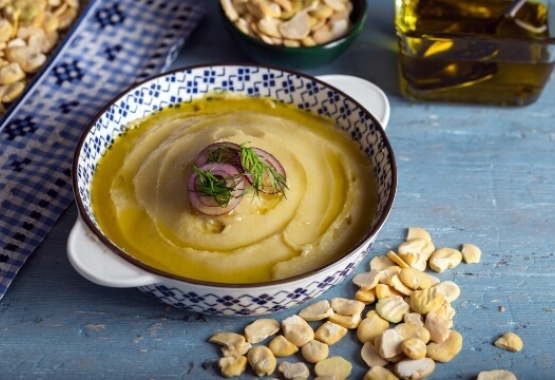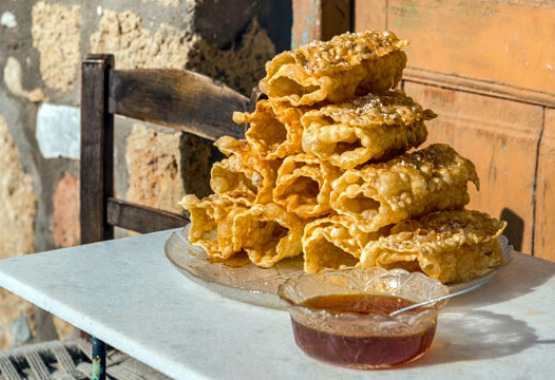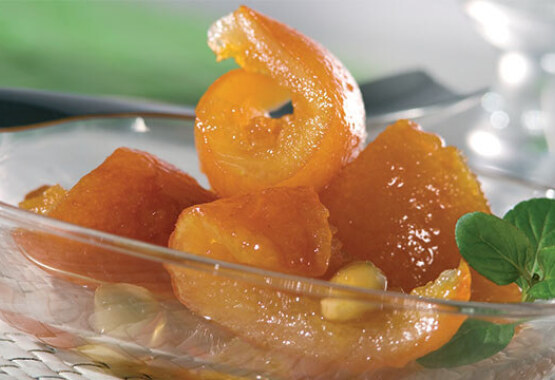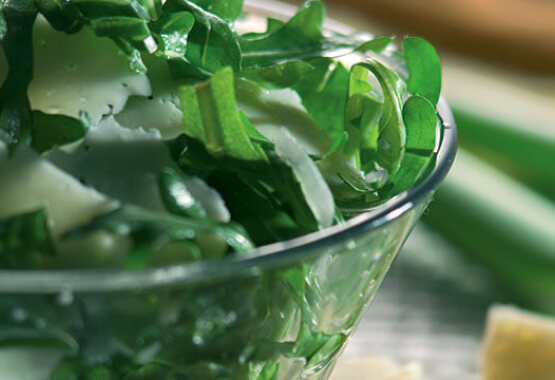
AROUND GREECE
So, pick your table in the local taverna and get ready to enjoy traditional goodies and local specialities by the crackling fireplace!
Your first stop is Thrace.
Let’s start our trip to taste-land from the northeastern region of Greece.
Local gastronomy is a mixture of flavours and aromas originating from Minor Asia and the Balkans. Try chickpeas with pumpkin and spices, lamb with chylopites (local pasta a.k.a. youfkades), savoury pies such as pastourmadopita (a delicious pie made with air-dried cured beef), prasokreatopita (a pie made with meat and leek) traditionally served as part of the New Year’s Day festive meal. Kavourmas is another speciality you should treat yourself with. It’s a seasoned meat dish originating from Pontus (northeastern Minor Asia); the meat is usually veal, buffalo, sheep or goat- slowly cooked with spices (allspice, cinnamon, clove, and nutmeg) in fat, a type of confit, and is preserved in it. Another local dish absolutely worth trying is tsigerosarmades (lamb offal with herbs and spices), pork or chicken with pickled cabbage, chicken with couscous, lachanodolmades (a mixture of minced meat, herbs and spices wrapped in cabbage leaves), sausages and pulses in soups or cooked with olive oil in a casserole pot. A popular Christmas dish is babou, i.e. pork intestine filled with tiny portions of meat, rice, leek, offal and spices. A couple more local specialities are kolbourek (rolled pie) and kioul (a chicken and batter soup).
Our next stop is Macedonia where local products and traditions have created special dishes that are definitely worth tasting. Most recipes include pork meat usually cooked with fruit and vegetables: pork with cabbage, quince, cherry plums, chestnut, greek celery; each variation is a popular wintertime dish. Cured Pork tenderloin is called kavourmas, and leeks are mashed with spices and meat to create savoury sausages.
A special Macedonian dish is sarmadakia with cabbage leaves and minced veal meat. Other meaty creations include soutzoukakia with a fluffy rice, roast lamb with yoghurt, meat balls with makalo (a type of spicy batter) and patsas with lots of skordostoumpi [a seasoning made with mashed garlic cloves and vinegar], one of Thessaloniki’s typical dishes.
There is one more thing missing from the local winter table: a pie! Pepper, mushroom, leek, a variety of greens, feta cheese are rolled in handmade phyllo sheets that are coiled on a round baking dish until the bottom is covered. This is the popular Macedonian coil pie.
The Epirus traditional cookery has lots of tasty suggestions for you and aims at nothing less than thrilling your taste buds. At Molos, Ioannina, by Lake Pamvotida, there are many restaurants facing the lake, the castle and the Island, where you can enjoy special local dishes such as frog legs, smoked trout and smoked eel. In Zagorochoria you can taste scrumptious pies (called zagorisies after Zagoria -the name of the area), the most popular one being kasiata. In Metsovo, you must try the local sausages, kontosouvli (barbecued skewered pieces of meat) that melts in the mouth, delicious game, veal cooked in wine served with home-made pasta, and metsovone (a local smoked cheese). Across Epirus, it is customary to be served at the table with at least one pie. Pies may be part of an everyday meal or a special festive one; they may be elaborate and rich or made with only a few humble ingredients, savoury or sweet, with or without phyllo, with a wide variety of ingredients to fill them with. In short, they are intrinsic to the area’s culinary identity.
Further south, in Thessaly and Central Greece, it is popular to barbecue skewered meat. Local dishes include spicy pork meat cooked in the skillet, giant beans (gigantes plaki) slowly baked in the oven, a dish sometimes served with pork meat. Home-made sour trahana with some milk and grated feta cheese makes the perfect soup for supper on a cold winter night. If you’re looking for something special try wild boar cooked in a tomato sauce or with quince, apples and honey. Another dish worth recommending is the allspice and cinnamon flavoured rabbit stew cooked with small onion bulbs. Last but not least, try spetzofai, a dish very popular on Mt. Pelion, cooked in the pan with local herb sausages and peppers in various colours.
Our last stop is the Peloponnese. Here, the festive table includes gournopoula as the main dish; a whole pig is roasted on a spit or half a pig is cooked in the oven for hours until the skin is crunchy like a biscuit. Mani (south Peloponnese) is an area well known for cured meat products. Taste syglino (cured pork meat which is smoked and then boiled with orange juice and peel) or try cured meat with fried eggs. Enjoy also a dish of rooster with chylopites (a type of greek pasta), goges (freshly made pasta) that are served buttered and sprinkled with grated mytzithra (a hard salty cheese), kagianas (eggs fried in olive oil, tomato and cheese), trahanopita (a pie made with trahana) and tsigarolachana (aromatic mountain greens sautéed with onion, tomatopaste, olive oil, salt and pepper).
Traditional Wintertime Dishes
Winter sunshine in Greece is the perfect opportunity for an escape to winter resorts, or other dreamy places dotting the mainland. Outdoor activities, the invigorating fresh air, romantic strolling in towns and villages will definitely whet your appetite for a finely cooked local dish wherever you choose to travel.So, pick your table in the local taverna and get ready to enjoy traditional goodies and local specialities by the crackling fireplace!
Your first stop is Thrace.
Let’s start our trip to taste-land from the northeastern region of Greece.
Local gastronomy is a mixture of flavours and aromas originating from Minor Asia and the Balkans. Try chickpeas with pumpkin and spices, lamb with chylopites (local pasta a.k.a. youfkades), savoury pies such as pastourmadopita (a delicious pie made with air-dried cured beef), prasokreatopita (a pie made with meat and leek) traditionally served as part of the New Year’s Day festive meal. Kavourmas is another speciality you should treat yourself with. It’s a seasoned meat dish originating from Pontus (northeastern Minor Asia); the meat is usually veal, buffalo, sheep or goat- slowly cooked with spices (allspice, cinnamon, clove, and nutmeg) in fat, a type of confit, and is preserved in it. Another local dish absolutely worth trying is tsigerosarmades (lamb offal with herbs and spices), pork or chicken with pickled cabbage, chicken with couscous, lachanodolmades (a mixture of minced meat, herbs and spices wrapped in cabbage leaves), sausages and pulses in soups or cooked with olive oil in a casserole pot. A popular Christmas dish is babou, i.e. pork intestine filled with tiny portions of meat, rice, leek, offal and spices. A couple more local specialities are kolbourek (rolled pie) and kioul (a chicken and batter soup).
Our next stop is Macedonia where local products and traditions have created special dishes that are definitely worth tasting. Most recipes include pork meat usually cooked with fruit and vegetables: pork with cabbage, quince, cherry plums, chestnut, greek celery; each variation is a popular wintertime dish. Cured Pork tenderloin is called kavourmas, and leeks are mashed with spices and meat to create savoury sausages.
A special Macedonian dish is sarmadakia with cabbage leaves and minced veal meat. Other meaty creations include soutzoukakia with a fluffy rice, roast lamb with yoghurt, meat balls with makalo (a type of spicy batter) and patsas with lots of skordostoumpi [a seasoning made with mashed garlic cloves and vinegar], one of Thessaloniki’s typical dishes.
There is one more thing missing from the local winter table: a pie! Pepper, mushroom, leek, a variety of greens, feta cheese are rolled in handmade phyllo sheets that are coiled on a round baking dish until the bottom is covered. This is the popular Macedonian coil pie.
The Epirus traditional cookery has lots of tasty suggestions for you and aims at nothing less than thrilling your taste buds. At Molos, Ioannina, by Lake Pamvotida, there are many restaurants facing the lake, the castle and the Island, where you can enjoy special local dishes such as frog legs, smoked trout and smoked eel. In Zagorochoria you can taste scrumptious pies (called zagorisies after Zagoria -the name of the area), the most popular one being kasiata. In Metsovo, you must try the local sausages, kontosouvli (barbecued skewered pieces of meat) that melts in the mouth, delicious game, veal cooked in wine served with home-made pasta, and metsovone (a local smoked cheese). Across Epirus, it is customary to be served at the table with at least one pie. Pies may be part of an everyday meal or a special festive one; they may be elaborate and rich or made with only a few humble ingredients, savoury or sweet, with or without phyllo, with a wide variety of ingredients to fill them with. In short, they are intrinsic to the area’s culinary identity.
Further south, in Thessaly and Central Greece, it is popular to barbecue skewered meat. Local dishes include spicy pork meat cooked in the skillet, giant beans (gigantes plaki) slowly baked in the oven, a dish sometimes served with pork meat. Home-made sour trahana with some milk and grated feta cheese makes the perfect soup for supper on a cold winter night. If you’re looking for something special try wild boar cooked in a tomato sauce or with quince, apples and honey. Another dish worth recommending is the allspice and cinnamon flavoured rabbit stew cooked with small onion bulbs. Last but not least, try spetzofai, a dish very popular on Mt. Pelion, cooked in the pan with local herb sausages and peppers in various colours.
Our last stop is the Peloponnese. Here, the festive table includes gournopoula as the main dish; a whole pig is roasted on a spit or half a pig is cooked in the oven for hours until the skin is crunchy like a biscuit. Mani (south Peloponnese) is an area well known for cured meat products. Taste syglino (cured pork meat which is smoked and then boiled with orange juice and peel) or try cured meat with fried eggs. Enjoy also a dish of rooster with chylopites (a type of greek pasta), goges (freshly made pasta) that are served buttered and sprinkled with grated mytzithra (a hard salty cheese), kagianas (eggs fried in olive oil, tomato and cheese), trahanopita (a pie made with trahana) and tsigarolachana (aromatic mountain greens sautéed with onion, tomatopaste, olive oil, salt and pepper).




